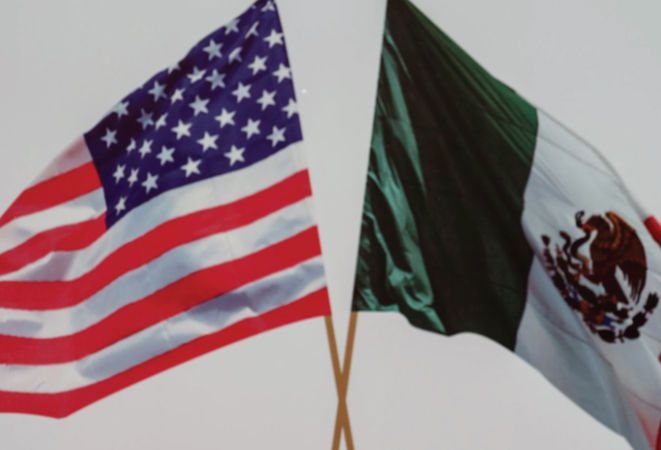
Cinco de Mayo celebrates the Mexican victory over the French at the Battle of Puebla, which took place on May 5, 1862.
It is not observed as a national holiday in Mexico, but schools in Puebla, where the battle took place, are closed for the day.
Mexico’s Independence Day is Sept. 16.
A report published by the UCLA Center for the Study of Latino Health and Culture said the observance of Cinco de Mayo in the U.S., started in California in 1863 in response to the resistance to French rule in Mexico.
Time magazine reports that the modern U.S. observance came into fashion in the 1940s during the rise of the Chicano Movement.
The Chicano Movement concentrated on issues such as restoration of land grants, farm workers’ rights and education.
Several leaders were Cesar Chavez, Reies Tijerina and Rodolfo Gonzales.
“Preservation of one’s own culture does not require contempt or disrespect for other cultures,” Chavez said.
Celebrating Cinco de Mayo picked up a lot of momentum in the 1980s when tequila and beer companies began to promote it.
May 5, 1862. Depictions of the battle showing Mexican cavalry overwhelming the French troops below the fort at Loreto. Scene recreated by Francisco P. Miranda. Oil on canvas, 1872.
Back and forth
The Mexican victory did not last long.
A year later, with 30,000 troops, the French were able to defeat the Mexican army and capture Mexico City.
But three years later, with support from the U.S., Mexico recaptured the capital and executed the French-installed ruler Maximilian I.
Mexican American
More than a decade before the Mexican victory at Puebla, citizens of Mexico became U.S. residents after the annexation of Northern Mexico in 1848.
The Treaty of Guadalupe Hidalgo, which ended the Mexican-American War, guaranteed full citizenship for all former Mexicans who requested it.
This really only applied to the Spanish-Mexican elite. About 80,000 people in California, Nevada, Utah, Arizona, Colorado and New Mexico were given citizenship.
It did not come easy for them, as many American settlers lynched Mexicans. Between 1848 and 1860 at least 163 Mexicans were lynched in California by what was mostly “frontier law.”
A large-scale influx of refugees came around 1910 when Mexico was in revolution and civil war.
California’s only Hispanic Governor
Jose Pacheco was born in Santa Barbara in 1831.
His father died in the Battle of Cahuenga Pass just weeks after he was born. The battle was a fight between wealthy landowners and the Governor of Alta California.
Pacheco’s father sided with the government and fought on horseback with a lance against Jose Avila of the rebel army. They charged each other three times, like a jousting tournament. When Avila’s lance was knocked to the ground, he shot and killed Romualdo Pacheco.
Jose Pacheco became a judge at age 22 in San Luis Obispo County and worked his way up in politics. He was a Republican and became Lieutenant Governor from 1871 to 1875.
When Gov. Newton Booth was elected to the U.S. Senate Pacheco became California’s 12th governor in 1875 for less than a year.
In 1879, he was elected the first Latino to represent a state in the U.S. Congress. He was re-elected in 1880.
Census change
The 2030 U.S. Census will include new race and ethnicity check boxes for Hispanic people and people of Middle Eastern and North African descent, the Office of Management and Budget announced this year.
The change is the first to race and ethnicity categories in 27 years and comes after years of criticisms that major racial and ethnic groups are left out of demographic collection.
In previous censuses, most people of Middle Eastern background were listed under the “White” category, and Hispanic people were considered an ethnicity, separate from race. People of North African descent did not have a clear individual category.
Mexicans are the largest population of Hispanic origin living in the United States, accounting for 60% of the U.S. Hispanic population in 2021.
From 2000 to 2021, the Mexican-origin population increased 79%, growing from 20.9 million to 37.2 million.
At the same time, the Mexican foreign-born population living in the U.S. grew by 23%, from 8.7 million in 2000 to 10.7 million in 2021.
Blending it up
The first Cinco de Mayo celebrations didn’t include margaritas — those weren’t invented until the 1940s. And consistently frosty beverages wouldn’t come until the invention of the frozen margarita machine.
Frozen margaritas, blended with ice, became popular in the 1950s, and by the 1970s, the margarita surpassed the martini as the most popular American cocktail.
At Mariano’s Mexican Cuisine, a Dallas restaurant, the blenders couldn’t keep up. In 1971, inspired by the 7-Eleven Slurpee machine, owner Mariano Martinez and his friend Frank Adams adapted a soft-serve ice-cream machine to make margarita “slush.” After 34 years of service, the first one was retired to the Smithsonian’s National Museum of American History.
Mariachi music
Every year at the end of August, the city of Guadalajara, Jalisco, Mexico celebrates the largest Mariachi festival in the world: Encuentro Internacional del Mariachi y la Charreria.
The largest Mariachi festival in California will be June 8 at the Hollywood Bowl. This year will be the 35th anniversary and Mariachi USA is the longest-running annual show at the Hollywood Bowl.
“In reflecting on the remarkable journey of Mariachi USA over the last 35 years, I am reminded of the profound connection that exists between our heritage and the music that defines it. It’s what I refer to as ‘Mariachi DNA’, the deep-rooted essence of mariachi music that runs through our veins,” event promoter Rodri J. Rodriguez said on the Mariachiusa.com website.
“Clearly, you don’t have to be Mexican to have Mariachi DNA. I for one am Cuban, yet when I hear mariachi, I feel the phenomenal excitement from head to toe.”
Sources: U.S. Census, Office of Management and Budget, California State Library, Mariachiusa.com, Smithsonian, Pew Research Center, UCLA Center for the Study of Latino Health and Culture
